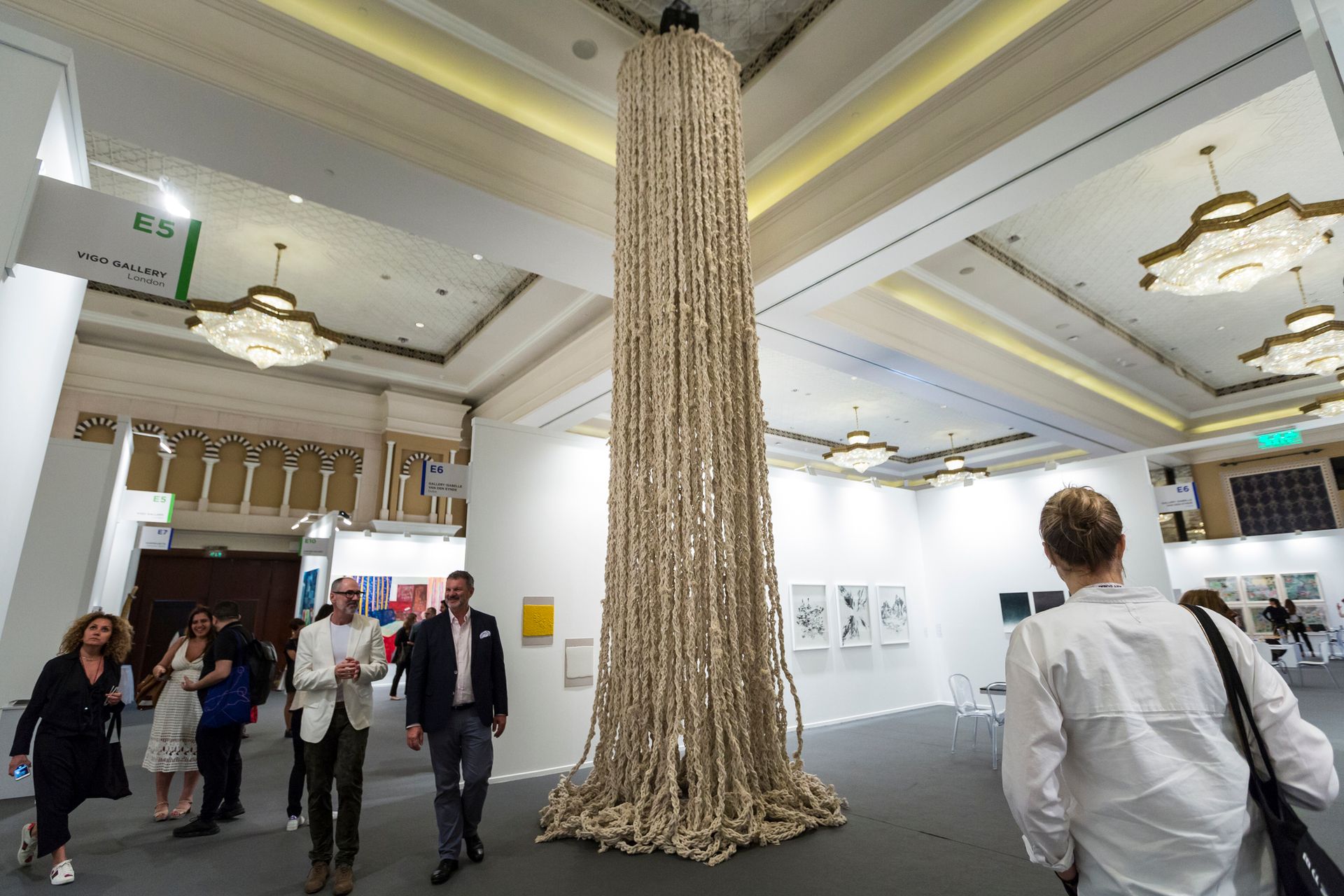When Hassan Sharif died in September last year, his Dubai- based gallery, Isabelle van den Eynde, paid tribute to the Emirati artist’s maverick spirit. “Sharif didn’t put stock in conventions of age, identity or the need for comfort. Only art and the restless making of art grasped his attention,” said a statement, highlighting the achievements of the Dubai-born polymath dubbed the godfather of conceptual art in the Gulf. At Art Dubai, a raft of special events and exhibitions explores why Sharif matters.
The life
Sharif’s career began in the late 1970s as a satirical caricaturist, drawing cartoons for the Akhbar Dubai newspaper, but his vision and practice were transformed after studying at the Byam Shaw School of Art in London from 1979 to 1984. He returned to the UAE with the aim of building an audience for contemporary art in the Gulf.
“Sharif was probably the greatest artist from the UAE and was active at a time when the fledgling [UAE] federation was seeking an identity. Sharif, to a large degree, helped de ne that identity,” says Sultan Sooud Al-Qassemi, the founder of the Barjeel Art Foundation, which includes several works by the artist.
His bold, Fluxus-like performance pieces made waves, especially in the conservative UAE. “For his earliest experimental work of the 1980s, Sharif brought friends to the edges of Dubai and they were the audience for his performances – jumping in the desert, tying rope between rocks – using apparently simple gestures to pointedly question ideals of technical skill, mastery and accomplishment,” says a spokeswoman for Gallery Isabelle van den Eynde.
The legacy
The gallery is showing Cotton Rope (2016), a seven-metre high sculpture – the last piece Sharif made. Yasmina Reggad, the independent curator who is overseeing this year’s Art Dubai Commissions (see below), will also dedicate a performance to Sharif at the Gallery Isabelle van den Eynde booth (14-15 March).
The piece, entitled IF-THEN GOTO, devised in collaboration with the choreographer Lana Fahmi, will activate the rope sculpture through dance movements. “Sharif not only was a visionary passeur but also a brave provocateur; he was very aware of the challenges and urge of the building of an audience for performance art in the UAE. He sensed its transformative power for his society,” Reggad says.

Other artists look to different aspects of his practice. An exhibition in the fair’s Julius Baer lounge “follows a trajectory of Sharif’s relationship with artists from different generations and provenance”, says the artist and curator behind the show, Cristiana de Marchi, who has named the show Homage without an Homage (the ironic title reflects Sharif’s irreverent and wry character, she says).
The exhibition features works by established and emerging practitioners, including Emirati Mohammed Kazem. One of Sharif ’s closest collaborators, he is showing two works from his Directions series (2016) of conceptual installations. The collaborative video Foolad (2014-15) by Dubai-based trio Hesam Rahmanian, Ramin Haerizadeh and Rokni Haerizadeh shows a DJ and telecoms executive responding to Sharif’s work Barcelona. “Sharif was a rupture in the art scene of the region! He looked at art from a new angle and swam against the current,” Rahmanian says.
“‘Making’ for [Sharif] is a matter of knowing the language of the materials and exploiting its syntax, creating a rare aesthetic coherence so that the object comes alive with its own story,” says participating artist Vivek Vilasini in a 1997 text featured in the catalogue for the group show But We Cannot See Them: Tracing a UAE Art Community, 1988-2008 at the NYUAD gallery in Abu Dhabi (until 25 May).
The catalogue also includes an interview between Sharif and De Marchi from 2009. He is asked how art influences society. “As [the Bauhaus pioneer] Johannes Itten said, art is like a bus that takes you to the end of the road and those who want to go further have to get out of the bus and they must walk on their feet. Those young artists must decide how they want to provoke the society, it is an individual choice,” said Sharif. “And art can change the mentality of the society.”
Art Dubai Commissions
The programme, curated by Yasmina Reggad for the second time, includes a series of five specially commissioned performances by Manuel Pelmuş, Lana Fahmi, Eglė Budvytytė, Iván Argote and Pauline Bastard. Pelmus, who studied dance in Bucharest, will present Private Collection, a series of live enactments representing works hoovered up by private collectors. Born to Collect by Argote and Bastard pits collectors against each other in a live game show, and Fahmi will engage with works at the fair in her piece What Modernity? On the Art Dubai blog, Reggad stresses why performance is in the spotlight here. “We must take into account that as long as performance and live art are not part of the arts curricula, it is important to present performance art, be it video or photographic works, archival and documentation material.”


